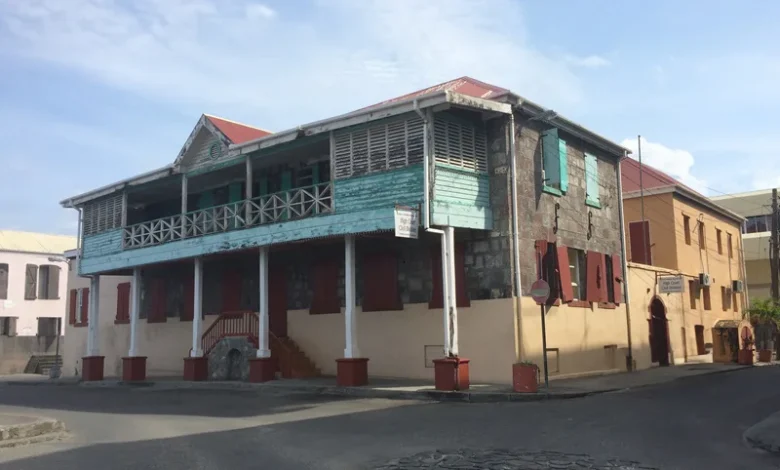Barracoon Building

The Barracoon Building in Roseau, Dominica, stands as a poignant reminder of the island’s colonial past and its role in the transatlantic slave trade. Constructed in 1763, this historic structure was initially used to detain enslaved Africans before they were sold at the nearby Old Market Square.
Barracoon Building’s Architectural Significance
The Barracoon Building exemplifies French colonial architecture, characterized by its robust stone construction and functional design. Its strategic location along the Roseau Bayfront underscores its historical importance in the colonial trade network. Over the centuries, the building has undergone various modifications, yet it retains much of its original structure and remains part of an ever-shrinking legacy of Dominica’s Architectural Landscape.
Historical Context
During the colonial era, the Barracoon Building was a holding facility for enslaved individuals brought to Dominica. After enduring the harrowing Middle Passage, these individuals were confined here before being auctioned at the Roseau Old Market. The building’s proximity to the market facilitated the swift transfer of enslaved people to buyers, embedding it deeply into the island’s history of slavery.
Current Use and Preservation
Today, the Barracoon Building houses the Roseau City Council, integrating its historical legacy into modern governance. Efforts have been made to preserve its structural integrity and historical significance. However, natural disasters have posed challenges; notably, Hurricane Maria in 2017 caused significant damage, including the destruction of its elaborate tripartite balcony.
Located on Dame Mary Eugenia Charles Blvd, Roseau, the Barracoon Building is accessible to visitors interested in exploring Dominica’s colonial history. Its proximity to other historical sites, such as the Roseau Market and the Neg Mawon Emancipation Monument, makes it a significant stop for those seeking to understand the island’s past.
Future Prospects
Preservation of the Barracoon Building remains a priority for heritage conservationists in Dominica. Ongoing restoration efforts aim to maintain its structural integrity while enhancing its role as an educational resource. By safeguarding this historic edifice, Dominica continues to honour its history and educate future generations about the complexities of its colonial past.




